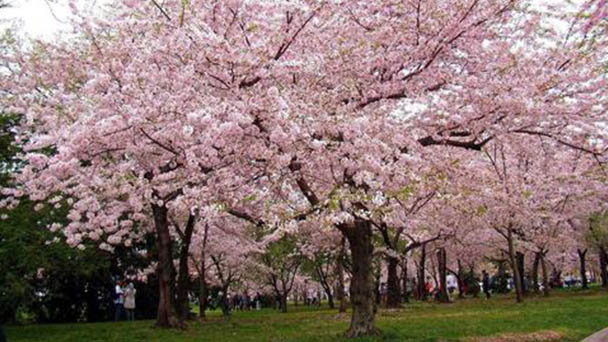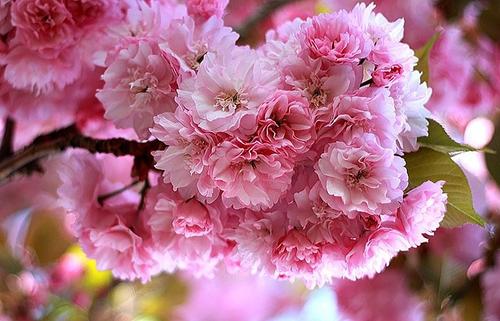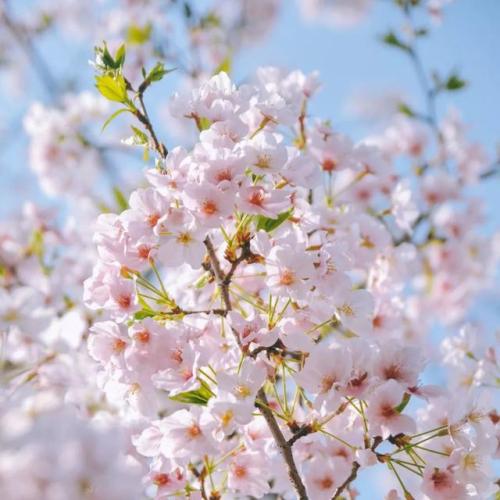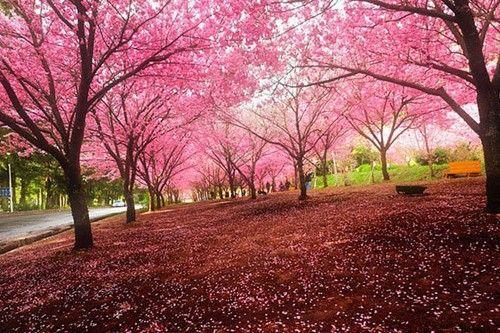Cherry blossom profile
Written by Maggie
Mar 23 2021

Cherry Blossom is the general name of Rosaceae. It has a wide variety of varieties. According to the statistics, there are more than 300 varieties of Cherry Blossom in the world.Cherry Blossom is native to the Himalayas region in the temperate zone of the Northern Hemisphere. It grows all over the world, but mainly in Japan. It is also the national flower of Japan, symbolising purity and nobility.
Cherry Blossom picture
The morphological characteristics of Cherry Blossom
The larger leaves are up to 12 cm long and 7 cm wide. The smaller ones are five centimeters long and two and a half centimeters wide. Cherry Blossom has an elliptic ovate or obovate, apex acuminate or sharp tail tip, edge with sharp double serrate, base round, thin wedge, above not dark green, glabrous, and below for light green, with sparse pubescent.
Cherry Blossom flowers usually bloom in April with or behind the leaves. Each branch has three to five flowers, 3 -- 3.5cm in diameter, and is umbelled. The petals are often white or pink with an incised tip. Involucral are bracts brown, elliptically ovate, puberulent on both surfaces. Bracts are also brown, spatulate oblong, sepals triangular-ovate.
Cherry Blossom is blooming in May. The drupe is nearly spherical in shape, 0.7 -- 1cm in diameter, and the surface of the nucleus is slightly ribbed and black in color.
Growth habit of Cherry Blossom
Cherry Blossom is a temperate and subtropical tree, which likes sunshine and warm and humid climate conditions, and has some cold resistance. The soil requirements are not strict, and it should be grown in loose, fertile, well-drained sandy loam, but not saline-alkali tolerant soil. Cherry Blossom has Shallow root system, avoiding water low - lying land. It has certain cold resistance and drought resistance, but weak resistance to smoke and wind, so it is not suitable to plant the coastal zone with typhoons.
Distribution range of Cherry Blossom
There are more than 100 species of Cherry Blossom, distributed in temperate regions of the Northern Hemisphere: Asia, Europe and North America, the main species in western and southwestern China, Japan and Korea.China Beijing, Xi 'an, Qingdao, Nanjing, Nanchang and other cities have garden cultivation.
Cherry Blossom main value
Cherry Blossom ornamental value
Cherry Blossom is a beautiful ornamental plant of high quality, so it is often used as a group or alone plant along the road, in the yard, in front of the building and so on.
Cherry Blossom can also create a bonsai for your bedroom to beautify your space and cultivate your mood.

Cherry Blossom medicinal value
The leaves and petals of Cherry Blossom are a kind of traditional Chinese medicine. According to the identification, Cherry Blossom bark contains 5-glucoside of gangolic acid and 5-rhombic glucoside (Sakurarin), as well as D-catechin and other medicinal substances in the wood. Its function is to relieve cough, relieve alcohol and treat fever and other symptoms.
Cherry Blossom's petals are also rich in vitamins A, B, and Cherry leaf enzymes, so Cherry Blossom is also used for beauty and health products.
Cherry Blossom can be used to close pores, control oil and moisturize your face. Cherry Blossom oil can be extracted from Cherry Blossom to make Cherry Blossom oil. Cherry Blossom oil contains Cherry Blossom enzyme which can remove acne from your face, so Cherry Blossom is also used to treat acne.
Cherry Blossom consumption function
Cherry Blossom's leaves can be made into dried and salted Cherry leaves, which can be used in tea or bath lotion, and can also be added to food products for high nutritional value and a healthy stomach.
Cherry Blossom is one of the most beloved flowers in Japan and is regarded as a national flower. When Cherry Blossom is in full bloom, it is always made into a snack or a wine called Cherry Blossom. It can be seen that Cherry Blossom can be used as both medicine and food.
Growing methods of Cherry Blossom
1. Temperature: Cherry Blossom is a temperate and subtropical species, and prefers sunshine and warm climate conditions. The optimum temperature is 18-25℃.
2. Watering: Cherry Blossom does not require much soil, but it does require a lot of water. As it is not drought-resistant, it must be watered in a timely manner, generally watering 3 to 4 times a month and thoroughly. As the roots of Cherry Blossom are shallow, it is taboo for water to appear.
Fertilizing: Cherry Blossom should apply fertilizer twice a year. The first time is in late winter and early spring. Use decaying organic fertilizer. The second time is after Cherry Blossom's flowering period, and you can properly supplement some ammonium sulfate, calcium superphosphate and other quick-acting fertilizer.
Cherry Blossom propagation methods
Grafting propagation. Available Cherry Blossom, mountain cherry seedling as rootstock. Cut grafted in late March or bud grafted in late August, after 3 to 4 years of cultivation, and it can be planted out of the garden. When grafting, 15 kg -25 kg of decomposed compost should be applied to each pit and 1 kg -2 kg of ammonium sulfate should be applied to each plant in July. After flowering and before sprouting in early spring, we need to cut dead branches, sick weak branches, long branches, try to avoid pruning thick branches, in order to maintain a complete crown.

Latest Updated
- Benefits of Bugleweed - 7 Science-backed Health Benefits
- Bugleweed Dangers & Side Effects - Is It Poisonous?
- How to Plant Evergreen Trees - What You Should Know
- When to Plant Evergreens - Grow Guide for Evergreen Trees
- 12 Wonderful Evergreen Shrubs for Your Garden
- 12 Popular Evergreen Plants with Pictures for Beginners
- When And How To Prune A Lilac Bush Like a Pro
- How to Grow & Care for Lilac Vine (Hardenbergia Violacea)
- Japanese Lilac Tree (Syringa Reticulata) Care & Propagation Guide
- Shumard Oak Pros and Cons - What to Know
Popular Articles
- Winter maintenance of Antirrhinum Majus
- How to Grow Terminalia Mantaly Tree
- How to Grow and Care for Crossostephium Chinense
- How to grow Antirrhinum Majus in spring
- Peristeria Elata (Dove Orchid) Profile: Info & Care Guide
- Underwatered Snake Plant (Sansevieria Trifasciata) - Signs And How To Fix
- How to Care for Brazilian Jasmine Plant (Mandevilla Sanderi)
- How to Grow & Care for Graptopetalum Purple Delight in Summer
- Rosa Chinensis (China Rose): Plant Growing & Care Tips
- How to Care for Baby Sun Rose (Aptenia Cordifolia)
